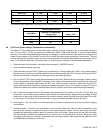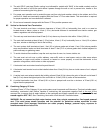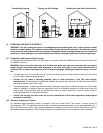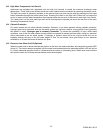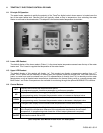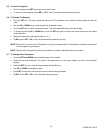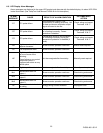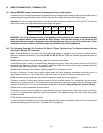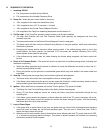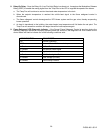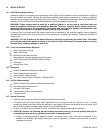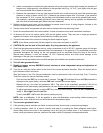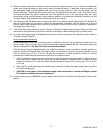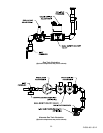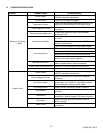27
PV500-46U 06/12
13 SEQUENCE OF OPERATION
1. Incoming 120VAC
a. Full time power to the Main Control Switch
b. Full time power to the Variable Frequency Drive
2. Power On - When the main control switch is turned on:
a. 120v is applied to the step-down transformer (24v)
b. 120v is applied to the L.W.C.O. terminal L1 (if used)
c. 120v is applied to the Fenwal Flame Safeguard Control
d. 24v is applied to the TempTrac operating temperature control terminal L1
3. Call For Heat - If the TempTrac operating control senses a call-for-heat condition:
a. The High Gas Pressure and Low Gas Pressure Switch (both optional) are energized and their safe
condition is proved.
b. The thermostat contact on the Fenwal Flame Safeguard Control is energized.
c. The flame control will then verify the Airflow-Proving Switch is in the open position, which must exist before
the blower is powered.
d. Energizing the blower should close the airflow proving switch. If the airflow-proving switch is not in the
closed position, the flame control’s fan terminals F1-F2 will power the Variable Frequency Drive (VFD)
blower system at low speed for pre-purge.
e. If the airflow-proving switch does not close following the blower being energized, the flame control will
lockout.
4. Proof of Air Pressure Switch - The control will look for a signal from the airflow-proving switch, indicating that
the blower is operating:
a. When the airflow generated by the blower is sufficient to cause the differential air switch to close, the 15 -
second pre-purge delay will start.
b. During this period any flue products or combustible gases which may have settled in the water heater are
evacuated.
5. Heat-Up - Following the pre-purge delay, the hot surface igniter will be energized:
a. The flame control will monitor the current applied to the hot surface igniter.
b. If the flame control determines the proving current meets the threshold, a dwell time delay starts to assure
the hot surface igniter has sufficient time to reach ignition temperature.
6. Ignition - When dwell time is completed a 4-second Trial for Ignition (TFI) period is initiated:
a. The Delay-On (Low Fire Hold) Relay and the Gas Safety Valves are energized.
b. During TFI the flame safeguard control will monitor the flame using flame rectification through the hot
surface igniter.
c. If the flame control senses the presence of flame before the end of the TFI period, the igniter will be de-
energized and the flame control will continue to monitor the flame, through the igniter, until the operating
thermostat ends the call for heat condition.
7. Loss of Flame Signal
a. If the igniter fails to sense flame at any time, the igniter and gas valve will be de-energized and the flame
control will reset and begin the call-for-heat sequence again. This will occur 3 times (one time if CSD-1)
before the flame control will lockout.
b. When the call for heat condition ends or flame failure occurs following the third TFI period (one time if CSD-
1), a 30-second post-purge period will begin. This period of blower operation will exhaust any remaining
combustion products from the system.



